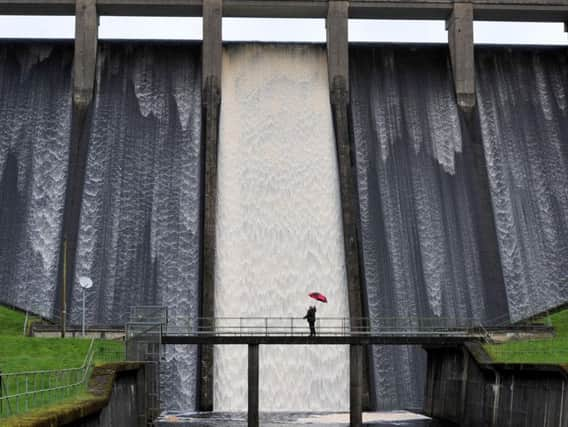How village hidden beneath Yorkshire's Thruscross Reservoir inspired Inspector Banks crime novel


The photograph captures the structure’s sheer scale, towering above Yorkshire Water plant engineer Chris Spencer.
How this picturesque packhorse bridge formed part of Yorkshire's trade routesHe is stood on a footbridge at the bottom of North Yorkshire’s Thruscross Reservoir, the northernmost of four in the Washburn Valley.
Advertisement
Hide AdAdvertisement
Hide AdThe last to be built there - completed in 1966 - its waters hide a secret below their surface and a tale that inspired the tenth Inspector Alan Banks novel of Leeds-born crime author Peter Robinson.
Its construction ‘swallowed up’ a small village called West End, originally built around a flax mill, though by then partially derelict with its industry in decline.
The area was evacuated, its trees were felled and its churchyard excavated for building work to start.
The hidden Yorkshire village that vanished beneath a lakeThe remains of bodies buried in the 17th and 18th century were exhumed before the village buildings completely disappeared.
Advertisement
Hide AdAdvertisement
Hide AdThen, West End was flooded as the reservoir, which would supply Leeds with drinking water, came into existence.
The foundations and remains of the submerged village are sometimes revealed when the reservoir, between Harrogate and Otley, recedes during times of drought, as in the summers of 1989 and 1990.
It is this exposure that inspired Robinson’s crime novel In A Dry Season.
Life before the reservoirs retold in picturesque valleyFirst printed in 1999, the novel concerns the unearthing of a skeleton in the fictional village of Hobb’s End, which was flooded by the creation of a reservoir and is exposed due to severe dry weather.
Advertisement
Hide AdAdvertisement
Hide Ad“It occurred to me that it would be fascinating if a body had been discovered at the time – and that was where the plot began,” Robinson said of the book, back in 2007.
Back to West End and its rare emergence is a reminder of the Thruscross’s past.
Today though, the tranquil reservoir is popular with walkers and has also become home to an abundance of wildlife.
Technical details: Nikon D3, 1/200 sec, F11 Iso 400, on a 70mm lens.